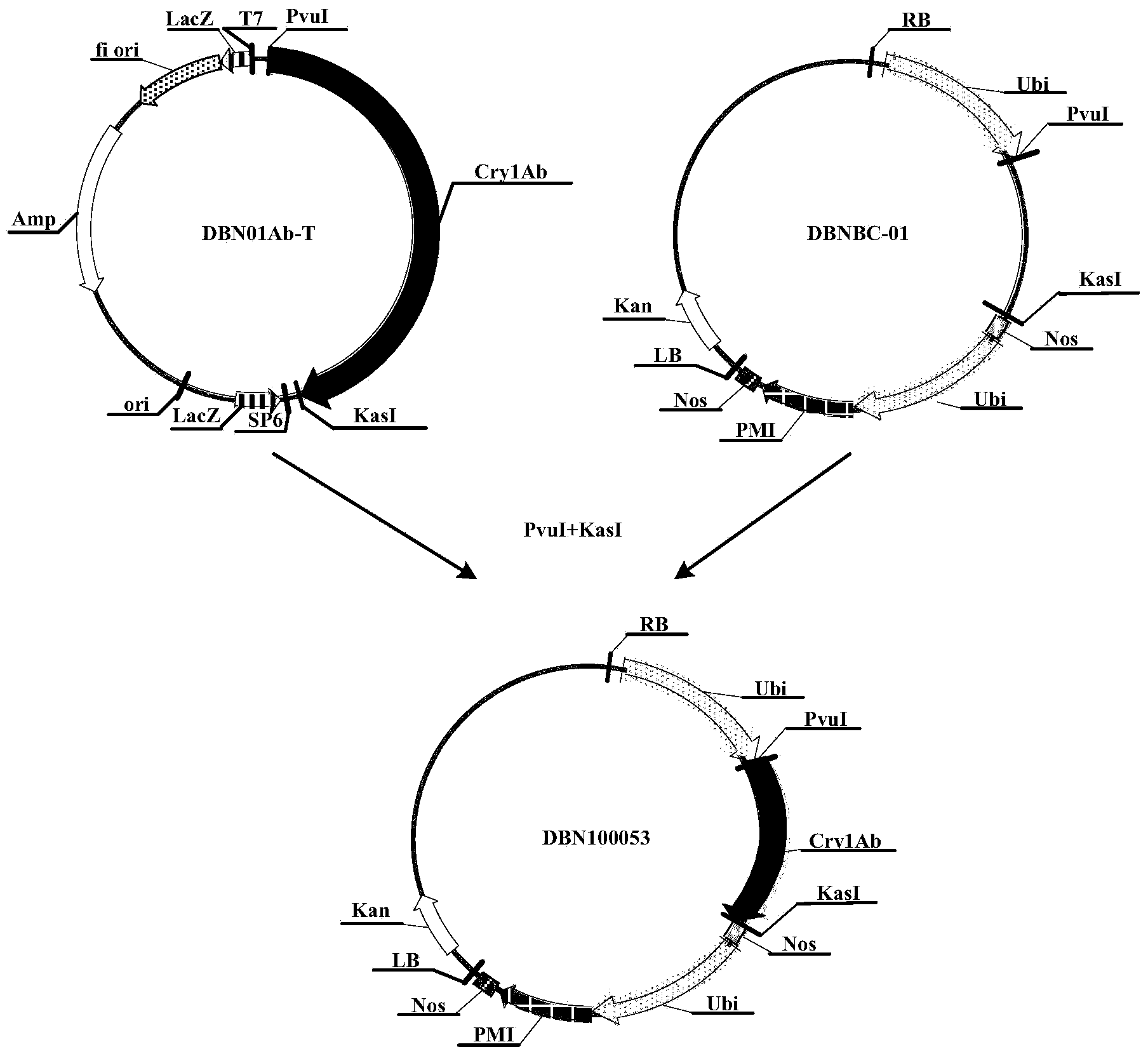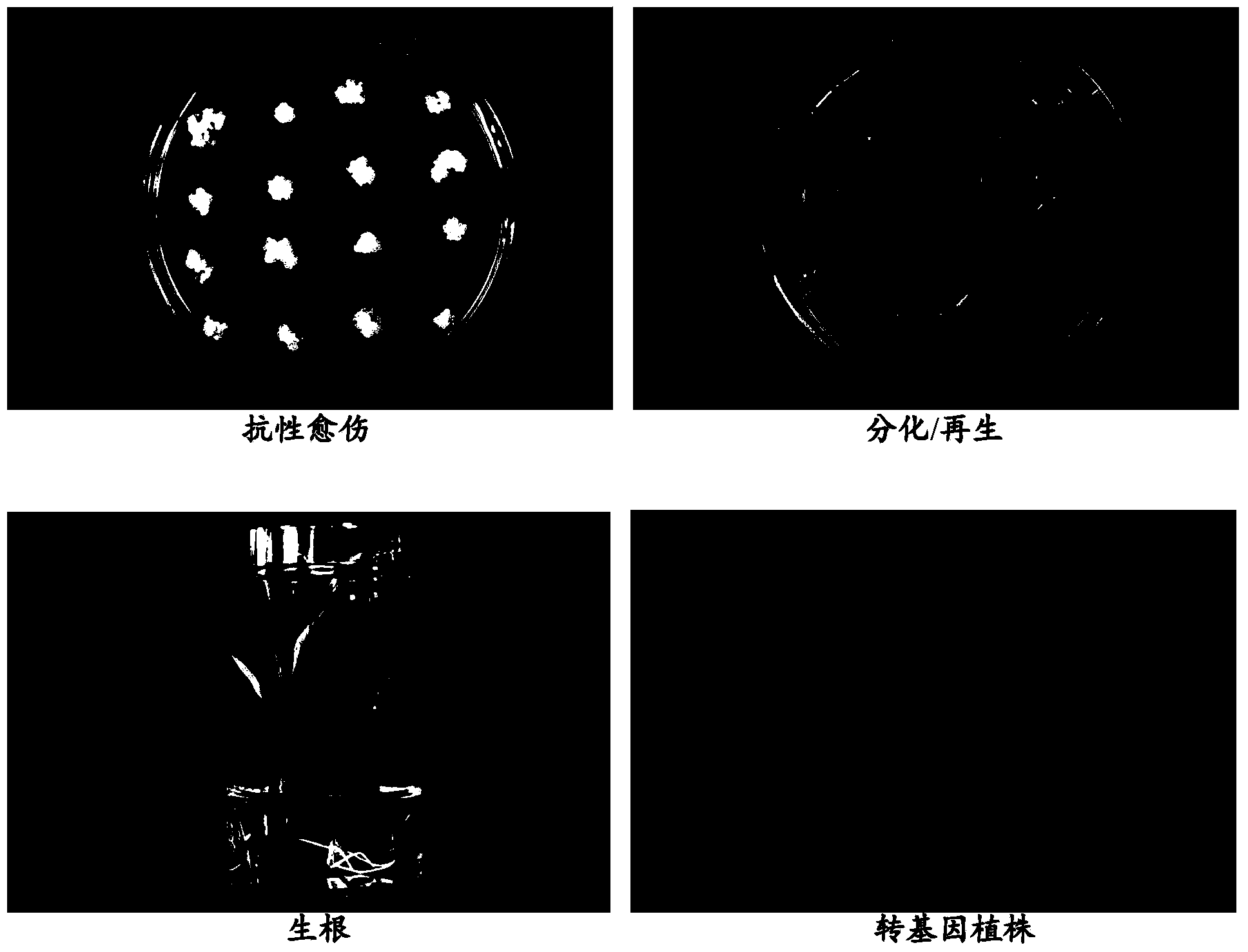Maize transformation method
A technology of corn and callus, applied in horticultural methods, botanical equipment and methods, using vectors to introduce foreign genetic material, etc., can solve the problems of poor stability and low conversion rate, and achieve cost-saving and easy-to-obtain effects
- Summary
- Abstract
- Description
- Claims
- Application Information
AI Technical Summary
Problems solved by technology
Method used
Image
Examples
no. 1 example
[0043] The first embodiment, construction of recombinant expression vector and transformation of recombinant expression vector into Agrobacterium
[0044] 1. Construct a recombinant cloning vector containing the target gene
[0045] The Cry1Ab nucleotide sequence was connected to the cloning vector pGEM-T (Promega, Madison, USA, CAT: A3600), and the operation steps were carried out according to the instructions of the pGEM-T vector produced by Promega Company to obtain the recombinant cloning vector DBN01Ab-T, and its construction process Such as figure 1Shown (wherein, Amp represents the ampicillin resistance gene; f1 represents the replication origin of phage f1; LacZ is the LacZ start codon; SP6 is the SP6 RNA polymerase promoter; T7 is the T7 RNA polymerase promoter; Cry1Ab is the Cry1Ab nucleoside acid sequence (SEQ ID NO: 1); MCS is a multiple cloning site).
[0046] Then, the recombinant cloning vector DBN01Ab-T was transformed into Escherichia coli T1 competent cells...
no. 2 example
[0053] The second embodiment, the acquisition of corn plants transferred to the Cry1Ab nucleotide sequence
[0054] Stripping of corn immature embryos: Sow the seeds of corn variety Zong 31 (Z31) in the greenhouse or field, wait for the corn plants to grow 7-10 days after pollination, when the length of the immature embryos is 0.6-1mm, the maximum length is 1mm. Good, take the immature embryos, in the induction medium (MS salt 4.3g / L, MS vitamins, sucrose 30g / L, L-proline 0.7g / L, 2,4-dichlorophenoxyacetic acid (2,4 -D) The callus was induced on 1.5mg / L, silver nitrate 0.85mg / L, 2-morpholineethanesulfonic acid (MES) 0.5g / L), and the induction time was 2 weeks. Transfer the induced calli (500) to the pre-culture medium (MS salt 4.3g / L, MS vitamin, sucrose 30g / L, L-proline 0.7g / L, silver nitrate 0.85mg / L, 2-morpholineethanesulfonic acid (MES) 0.5g / L, 2,4-dichlorophenoxyacetic acid (2,4-D) 1.5mg / L) for pre-culture, the pre-culture time is 4-7 days . Subculture the callus that h...
no. 3 example
[0061] The third embodiment, using TaqMan to verify the corn plant transferred to the Cry1Ab nucleotide sequence
[0062]About 100mg of the leaves of the maize plant transformed with the Cry1Ab nucleotide sequence was taken as a sample, and its genomic DNA was extracted with Qiagen's DNeasy Plant Maxi Kit, and the copy number of the Cry1Ab gene was detected by the fluorescent quantitative PCR method of Taqman probe. At the same time, wild-type maize plants were used as a control, and detection and analysis were carried out according to the above method. The experiment was repeated 3 times, and the average value was taken.
PUM
| Property | Measurement | Unit |
|---|---|---|
| length | aaaaa | aaaaa |
Abstract
Description
Claims
Application Information
 Login to View More
Login to View More - R&D
- Intellectual Property
- Life Sciences
- Materials
- Tech Scout
- Unparalleled Data Quality
- Higher Quality Content
- 60% Fewer Hallucinations
Browse by: Latest US Patents, China's latest patents, Technical Efficacy Thesaurus, Application Domain, Technology Topic, Popular Technical Reports.
© 2025 PatSnap. All rights reserved.Legal|Privacy policy|Modern Slavery Act Transparency Statement|Sitemap|About US| Contact US: help@patsnap.com



